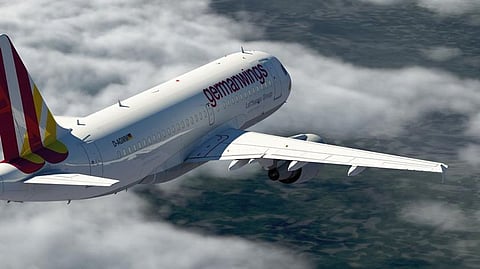
- Home
- न्यूजग्राम
- NewsGram USA
- India
- World
- Politics
- Entertainment
- Culture
- Lifestyle
- Economy
- Sports
- Sp. Coverage
- Misc.
- NewsGram Exclusive
- Jobs / Internships

By Shreya Upadhyaya
Two days after the Germanwings crash happened, French and German statements suggested that the co-pilot on the plane "intentionally" slammed it into the French Alps, killing all 150 onboard.
Marseille public prosecutor Brice Robin told reporters that the plane's 28-year-old co-pilot, Andreas Lubitz, deliberately flew the plane into a mountain, when he was alone in the cockpit.
As soon as the announcement was made, German pilots reacted with anger and confusion, and justifiably so.
The fact that a conclusion was reached so soon raises several questions. First, what was the eagerness to "find" a culprit? There have been instances of a plane crash in the past and answers have come out after a thorough investigation. Why didn't the authorities wait to get to know the relevant facts?
Some pilots working with the airline feel that there was a search for a quick answer, instead of a good answer.
According to the announcement, Captain Patrick Sonderheimer, had left for a toilet break, and when he returned and knocked on the cockpit door, Lubitz refused to open it. And instead, he took Airbus A320 plane steadily downwards at 3,000 feet per minute, until it crashed it into the Alpine ravine. Robin said Lubitz had "a willingness to destroy the aircraft." Shortly after Robin's press briefing, Lufthansa CEO Carten Spohr and the German Transportation Minister each said that based on his account, they had concluded that Lubitz deliberately crashed the plane.
However the second question that arises is that why did captain Sonderheimer, who spent several minutes banging on the cockpit door, not use an emergency code (designed to make the system ineffective, that lets someone inside the cockpit)? The latest statement not only ignores it conveniently, it does not even mention this crucial detail anywhere.
While several pilots have been raising doubts over this, still others think that the person within the cockpit can reverse any attempt to gain entry from outside.
According to a video by Airbus, crew members can tap an emergency code on the keypad outside the cockpit door if someone tries to gain entry into it. The code sets off a 30-second alarm inside, until the door opens for just five seconds, allowing the person to come in.
The prosecutor said that Lubitz was conscious while inside, since the audio on the voice recorder has him breathing normally throughout the incident, until the fatal moment. But pilots ask the third and an important question that the prosecutor did not answer. Normal breathing sound does not necessarily mean that he was able to open the door for the captain. If so, was he conscious?
The statement also talks on the issue of Lubitz's mental health. Germanwings crew members who flew with him days before the crash said that he seemed "relaxed and very normal." They added that there was "never any sign that anyone should be concerned about." This contradiction in the statement and apparent reality raises the fourth question. Was Lubitz really depressed and suicidal?
So did co-pilot Lubitz in fact commit this tragedy or is it just an image clearance move by the stakeholders? Whether or not these questions will ever find an answer, skepticism and suspicion will loom large, for a long time, over an airline that has been known for its safety record.
